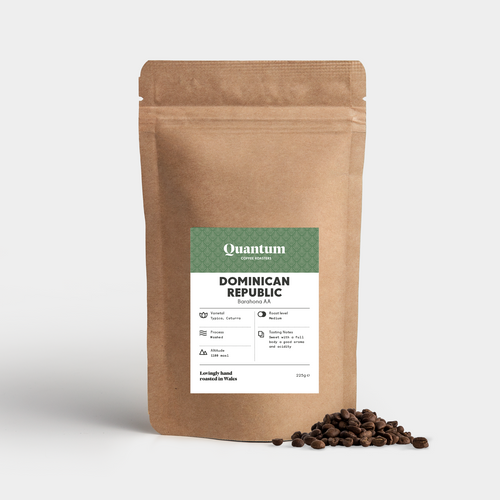QUISQUEYA…
…meaning ‘mother of lands’, an affectionate name given by the Dominicans to their country. The country takes up about half of the island of Hispaniola which it shares with Haiti.
CHRISTOPHER COLUMBUS AND ‘THE NEW WORLD’
The Dominican Republic was the first permanent Spanish settlement in Christopher Columbus’ ‘New World’ in the Americas. His first voyage in 1492 took him to the island on the 5th of December of that same year. He claimed the land for Spain naming it La Espanola and made this his sole residence in the region.

Credit: Viajes_de_colon.svg: Phirosiberia derivative work: Phirosiberia (talk) - Viajes_de_colon.svg
He returned to the island during his second voyage to the Americas in 1494 where he named and established a few more settlements – as you do – but it wasn’t until 1496 that Christopher’s brother Bartholomew Columbus built the city named Santo Domingo which became Western Europe’s first permanent settlement in the ‘New World’. It also became the catalyst for further Spanish conquest of the Americas over the next decades and the headquarters of the Spanish colonial authority.
The first decade of the 1500s saw a gold rush on the island after a large amount of gold was discovered creating a mining boom whereby gold was mined and shipped to Spain for the Spanish Crown. Centuries of colonisation and wars followed as is the case with many countries that were colonised by Western civilisations. They all have turbulent pasts.
Today, the city of the Americas, Santo Domingo is the capital of the Dominican Republic.
DOMINICAN REPUBLIC’s UNIQUE TOPOGRAPHY
The Dominican Republic has a diverse topography. From sandy beaches to mountainous towns, the Dominican is bordered by a series of great mountain ranges one of which is the Cordillera Central, home to the Caribbean’s highest peak Pico Duarte (at 3078 masl)!

The country’s coastline is over 1600 kilometres in total and 25% of the land is protected. The diversity extends from lush valleys, ancient caves amidst the rainforests, pine forests and Lago Enriquillo, a huge saltwater lake sitting 40mtrs below sea level – the lowest point in the Caribbean meaning the Dominican Republic holds the highest peak and the lowest point in the whole of the Caribbean! That’s definitely unique enough for me!
Photo by Valeriy Labushkin
THE COFFEE STORY PAST AND PRESENT
The Dominican has been producing coffee for the last 300 years, so they are definitely not new to the coffee scene. It was, yes, good guess, the Spanish colonists that introduced coffee to the country. It all started in 1700s and it quickly became a popular crop with the local farmers. Specifically, we know that the great coffea arabica plant arrived in around 1720 by someone called Gabriel de Clieu. Apparently, he was the key factor for enabling coffee cultivation in the Caribbean where it spread and flourished including in the Dominican Republic.
Although it started in the 1700s, it wasn’t commercially exported until much later, in 1872.
Coffee growing regions of the Dominican
As usual, the diverse terrain and topography was the prefect environment to cultivate coffee when the plant first arrived and has helped it continue to thrive. The resulting elevations of the mountains means that the coffee beans are grown at high altitudes. The higher the altitude, the harder it is to cultivate coffee (the plants take longer to grow in these harsh conditions) but the results when done, are amazing because it means the coffee has more time to develop and therefore has more complex and flavourful sugars.The Dominican has a number of growing regions with each one producing coffee with their own distinct flavours and complexities.
CIBAO VALLEY
This is located in the northern part of the country and coffees from here are low in acidity but are full bodied with nutty and earthy notes. The region is a valley but in high elevation therefore making it ideal for the cultivation of coffee.
BANI, AZUA and SAN JOSE DE OCOA
These two areas occupy part of the southern region of the country. Bani is the primary region for Dominican’s commercial manufacturing and the export of bananas as well as coffee and gets a significant amount of rainfall and this helps the soil stay enriched, moist, and extremely fertile.
Azua’s primary crops apart from coffee are sugar and tobacco and the mountainous fertile soil surrounding the area produce savoury flavoured coffees. San Jose also occupies the southern part of the Dominican and coffee from this area is known for its robust flavour.
JUNCALITO
This area is located in the middle of the country with a mountainous landscape and a mild pleasant climate. The coffee produced here is known for its hints of fruitiness from the tropical fruits found in the area.
As always, bringing you the best each origin has to offer, our coffee comes from this region which is located in the southwestern part of the country and is considered to make some of the highest quality coffee in the Dominican Republic.
Temperatures here tend to remain steady throughout the year and this produces coffees that are notable for their rich flavour and acidity.

Photo by Rodrigo Flores
Coffee production
The Dominican Republic produces 350,000 to 500,000 bags per year and although a hefty amount, less than 20% of this is exported. There is a good reason for this; internal consumption of coffee is extremely high here.
Dominicans love their coffee and coffee forms part of their culture with consumption levitating the 3 kg per capita! This high level of consumption does have its drawbacks as it means that the quality of a lot of the coffee can be lower than today’s higher speciality coffee standards as it stays internal. This is not to say that there has been and still is potential for finding high quality coffees.
As mentioned above, Dominican coffees can be diverse and surprisingly complex, and the regions discussed above have been designated officially the government to promote each of the regions individual coffee profiles. Why? Because each region has its own distinct micro-climate thus producing their very own coffee flavours. Saying that, most coffee on the island tends to be grown at between 600-1450 metres above sea level. So, due to the topography and climate coffee tends to be harvested all year round although this peaks in April around the Semana Santa (Holy Week) festival.
OUR COFFEE
Coffee farms in the Dominican are typically small and average less than 3 hectares each. Most if not all of the coffee is grown organically even though many of the farms are not officially certified (the ‘why’ is another story for another time). The majority of coffee is shade grown under canopies of pine, macadamia, and guava trees.
Just like the coffee we are offering, most coffees are wet processed with cherries de-pulped within 24 hours, naturally fermented, washed, and dried in the sun. Most farmers process their coffee themselves in small wet mills. The beans are then transported to the larger mills where the coffee is prepped for export and/or the domestic market.
So, from the Barahona region, our coffee is of ‘AA’ grade – so yes, top notch! It is sweet with a full body, great aroma and acidity!
Give it a try and grab your tasty bag and enjoy a great brew!
you can also check out our other Caribbean coffee from colourful Cuba!



